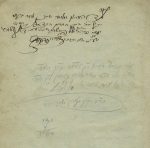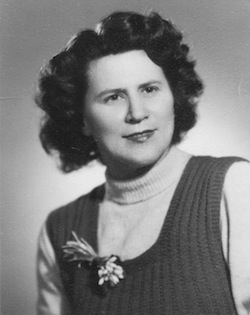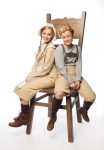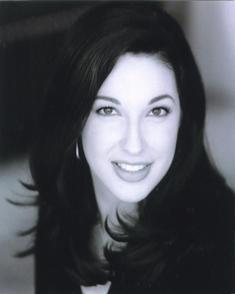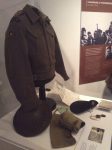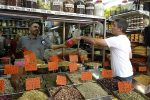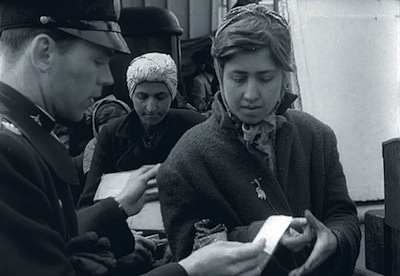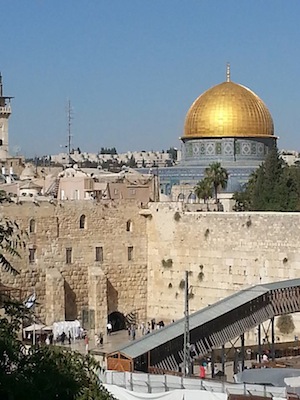The Canadian military helped liberate Bergen-Belsen and other Nazi concentration camps near the end of the Second World War, a fact that was omitted for decades from recorded history.
The experiences of Canadian liberators – and the meaning of the term “liberation” itself – were the subject of the keynote address at the International Holocaust Remembrance Day observance in Vancouver last week.
Prof. Mark Celinscak, a Canadian who teaches at the University of Nebraska Omaha, delivered the address Jan. 18, at a commemoration presented by the Vancouver Holocaust Education Centre (VHEC) in partnership with the Norman and Annette Rothstein Theatre.
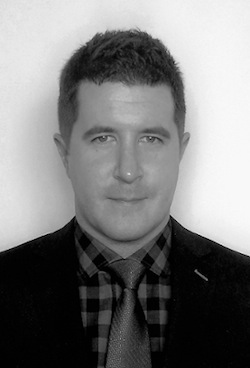
Celinscak’s book, Distance from the Belsen Heap: Allied Forces and the Liberation of a Nazi Concentration Camp, was recognized as the best nonfiction book of 2016 by the Vine Awards for Canadian Jewish Literature. In his lecture, he explained how he stumbled upon the facts of Canadian involvement in the liberation of Nazi camps.
Researching the liberation of Bergen-Belsen, he encountered multiple conflicting narratives, but none involved Canadians, he said. In archival research, he found references to Canadians encountering Nazi camps and so he consulted leading Canadian military historians, but all assured him there was no Canadian role in the liberation of concentration camps.
Through further research, Celinscak identified a few soldiers who confirmed the Canadian military’s involvement. These connections led to more and, eventually, he had identified 1,000 individual cases of Canadian military personnel who participated in the liberation of Nazi camps. Seven decades after the end of the war, this aspect of history is only now coming to light. The oversight, said Celinscak, was likely due to the general sense of chaos in Europe at the end of the war.
In introducing Celinscak, VHEC executive director Nina Krieger said: “Were it not for the tenacious scholarship of this evening’s presenter, future generations might never have known of the Canadian role in this aspect of the Second World War.”
Celinscak believes his research helps right an omission in the record. He reflected on an incident from 1997, when plans for a new Canadian War Museum included a Holocaust memorial gallery. Controversy ensued, and Senate hearings were held on the appropriateness of including the Holocaust in a museum devoted to Canadian military history.
“Upon conclusion of the hearings, the plan for a Holocaust memorial gallery was promptly abandoned,” Celinscak said. “In the view of many who testified, the Holocaust either had no place in the country’s war museum or it held no direct connection to Canada and its military.”
His research, however, indicates that the Canadian military did indeed have a connection to the Holocaust, as liberating forces.
Celinscak’s local address was related to the exhibition currently being presented at the VHEC, called Canada Responds to the Holocaust, 1944–45. The exhibition, Celinscak said, reflects “a recent growing body of research that explores how the Canadian government, Canadian organizations and average Canadians responded to the Holocaust.” Celinscak wrote the exhibition’s panels related to Bergen-Belsen, while the overall exhibition was developed by Prof. Richard Menkis and Ronnie Tessler.
Canadians helped liberate camps in the Netherlands and in northern Germany, Celinscak said, though Bergen-Belsen was not taken by military force.
“Simply put, the Allies became involved in Bergen-Belsen because the Germans turned it over to them,” he said. Recognizing that the war was all but lost and that the disease-ridden camp presented a public health hazard to the surrounding German population, a representative from the German army crossed British lines and said that inmates in a nearby concentration camp were ill. The Allies entered Bergen-Belsen on April 15, 1945.
“In the ensuing days, weeks and months, British and Canadian forces from the surrounding area arrived at Bergen-Belsen to assist, to witness and to document,” said Celinscak. “Clearly, military personnel were unprepared for what they were to find in the camp.”
The “liberation” removed the Nazis from the scene, but life improved slowly for the survivors of the camp.
“The war, of course, still continued,” he said. “As a consequence of that, supplies were limited, personnel were largely unavailable and many resources were occupied elsewhere. Those who remained to work in the camp were left with monumental tasks.”
The victims of Bergen-Belsen continued to die. In the two weeks after the Allies took over, 9,000 people died of disease. The next month, 4,500 inmates succumbed, and another 400 perished the following month.
“In total, approximately 14,000 people died in the camp after its transfer to Allied control,” said Celinscak. “In other words, nearly a quarter of the total number of prisoners still alive when the British and Canadian forces first arrived in the camp ultimately met their demise.… While the situation slowly improved, the conditions in the camp remained grim even weeks after its surrender.”
This reality is partly why Celinscak’s research also focuses on the meaning of the term liberation.
“Liberation was an experience that transformed the lives of both liberators and survivors,” he said, noting that this is another newly emerging field of academic inquiry.
“What does that word mean in relation to the Holocaust?” he asked. “If we consider some popular representations of the liberation of Nazi concentration camps, we often see it framed as a jubilant event, one that brought to an end the suffering of the victims of the Holocaust. In films such as Roberto Benigni’s Life is Beautiful, in history books and in some museum exhibits, liberation is frequently depicted as a homogenous, joyful moment in time. But how accurate is this portrayal?”
Liberator narratives, he said, “are overflowing with shock, grief, confusion, disgust and rage.” For survivors, life did not turn for the better instantly. Public health considerations meant the camp inmates were effectively quarantined.
“The prisoners remained behind barbed wire,” he said. “Initially, the survivors were not given autonomy to leave the camp whenever they saw fit. Instead, in the weeks – and, for some, in the months and even years that followed – they continued to live behind the barbed wire of these camps. Places like Bergen-Belsen became displaced persons camps. The survivors were still guarded, only by men in different uniforms.”
In extensive interviews with many survivors, Celinscak came to realize the nuance in the concept of liberation.
“Liberation was a highly ambivalent experience,” he said. “They understood that they were no longer prisoners of Nazi Germany, but many would remain in displaced persons camps long after the war, learning that many of their friends and family had not survived what we now refer to as the Holocaust. For both survivor and liberator, they would contend with these experiences for the rest of their lives.”
Phil Levinson, president of the board of the VHEC, welcomed visitors and introduced a procession of Holocaust survivors carrying Yahrzeit candles. David Schaffer led the Mourners’ Kaddish. Councilor Raymond Louie read the proclamation from the City of Vancouver.
International Holocaust Remembrance Day, which was designated by the United Nations in 2005, is officially on Jan. 27, the anniversary of the liberation of Auschwitz-Birkenau.
Pat Johnson is a communications and development consultant to the Vancouver Holocaust Education Centre.







